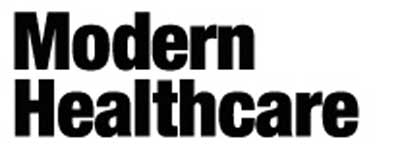Overview
Utah was one of the first states to operate an APCD, and claims to be the first to begin tracking and analyzing episodes of care, an important feature of risk-sharing based payment systems for states looking to reduce private payer and Medicaid expenditures. The state also enacted a right to shop program in 2018, which requires the Public Employees’ Benefit and Insurance Program to implement a savings reward program and allows health insurers to reward plan enrollees for selecting high-quality and low-cost health care providers. Additionally, to promote prescription drug price transparency, the legislature passed laws to prohibit pharmacy benefits managers from preventing a pharmacist from disclosing cost information to a patient,
In 2024, the Utah legislature considered legislation addressing telemedicine services, health insurance benefits, standards for healthcare facilities, and health benefit plan cost sharing, all of which ultimately died.
See below for an overview of existing Utah state mandates. Click on citation tab for detailed information of specific statutes (click link to download statute text).
State Action
Latest Legislative Session: 1/17/2023 - 3/3/2023 (2023 term). *Current session bill updates are ongoing. Check back weekly for updates.
HB 110 – Utah
Introduced: 2021 Status: Enacted
Health Care Payment Amendments. This bill provides that a governmental entity within the state that is a health care provider may not collect an overdue payment for a medical material or service from the debtor’s …
HB 116 – Utah
Introduced: 2022 Status: Inactive / Dead
This bill limits when a health care provider may seek payment for a medical service or procedure from an individual or a health benefit plan. For an insured patient, a health care provider may not, …
HB 127 – Utah
Introduced: 2017 Status: Inactive / Dead
This bill requires a health insurer to develop and implement a savings reward program for enrollees; requires an insurer to obtain approval of the savings reward program from the insurance commission; and gives the commissioner …
HB 128 – Utah
Introduced: 2017 Status: Enacted
This bill defines terms; modifies the circumstances under which a health care provider may make a report to a credit bureau, use the services of a collection agency, or use a non-routine billing or notification …
HB 154 – Utah
Introduced: 2017 Status: Enacted
This bill defines terms; amends the Medical Assistance Act regarding reimbursement for telemedicine services; amends the Insurance Code to require insurer transparency regarding telehealth reimbursement; amends the Public Employees’ Benefit and Insurance Program Act (PEHP) …
HB 313 – Utah
Introduced: 2020 Status: Enacted
Telehealth Parity Amendments: This bill amends provisions related to insurance coverage for telehealth services and telemedicine services, specifically the definition of telemedicine services; clarifies the scope of telehealth practice; and requires certain health benefit plans …
HB 370 – Utah
Introduced: 2019 Status: Enacted
Pharmacy Benefit Manager Amendments: creates a pharmacy benefit manager license; requires a person who acts as a pharmacy benefit manager in the state to be licensed by the Insurance Department; and creates certain operating and …
SB 208 – Utah
Introduced: 2018 Status: Enacted
This bill requires a pharmacy service entity that uses direct or indirect remuneration to report certain information to pharmacies or the pharmacies’ pharmacy services administration organization; and prohibits a benefits manager or coordinator from preventing …
SB 229 – Utah
Introduced: 2019 Status: Enacted
Medical Billing Transparency Amendments: requires the Department of Health to publish certain health care cost information; requires the Department of Health to make certain information from the all-payer claims database available to the public through …
Utah Code § 26-1-2. Definitions: Utah Health Code – Utah
Introduced: Status: Enacted
Definitions related to Department of Health Organization
Download
FTC v. HCA Healthcare & Steward Health Care – Utah
District Court: District of Utah Status: Pending
HCA Healthcare, the second largest health system with six hospitals in the Wasatch Front region of Utah, proposed to acquire five hospitals from Steward Health …
In re: Suboxone Antitrust Litigation (State of Wisconsin, et al. v. Indivior Inc, et al.) – Alabama, Alaska, Arkansas, California, Colorado, Connecticut, Delaware, District of Columbia, Florida, Georgia, Hawaii, Idaho, Illinois, Iowa, Kansas, Kentucky, Louisiana, Maine, Maryland, Massachusetts, Michigan, Minnesota, Mississippi, Missouri, Nebraska, New Hampshire, New Mexico, New York, North Carolina, Ohio, Oklahoma, Oregon, Pennsylvania, South Dakota, Tennessee, Utah, Virginia, Washington, West Virginia, Wisconsin
District Court: E.D. Pennsylvania Status: Pending
In September 2016, 35 state attorneys general and the District of Columbia brought a multi-district case against pharmaceutical manufacturer Indivior, MonoSol RX et al., alleging …
In Re: Generic Pharmaceuticals Pricing Antitrust Litigation – Alabama, Alaska, Arizona, Arkansas, California, Colorado, Connecticut, Delaware, District of Columbia, Florida, Hawaii, Idaho, Illinois, Indiana, Iowa, Kansas, Kentucky, Louisiana, Maine, Maryland, Massachusetts, Michigan, Minnesota, Mississippi, Missouri, Montana, Nebraska, Nevada, New Hampshire, New Jersey, New Mexico, New York, North Carolina, North Dakota, Ohio, Oklahoma, Oregon, Pennsylvania, South Carolina, Tennessee, Utah, Vermont, Virginia, Washington, West Virginia, Wisconsin
District Court: Eastern District of Pennsylvania Status: Pending
Plaintiffs are attorney generals from 48 states, Puerto Rico, and the District of Columbia, as well as classes of private plaintiffs that filed an antitrust …
Additional Resources
STATE BUDGET
Utah’s fiscal year begins on July 1 and ends on June 30 of the following year. Agencies submit their budget requests to the governor in October. The governor submits his or her proposed budget to the state legislature in December. The legislature typically passes a budget in March. A simple majority is required to pass a budget. Utah is one of 44 states in which the governor has line item veto authority.
STATE LEGISLATURE
The Utah State Legislature meets annually for a 45-day session, starting on the first Tuesday after the third Monday in January. There are 29 state senators serving four-year staggered terms. The 75 members of the House of Representatives serve two-year terms. Bills do not carry over from year to year.




